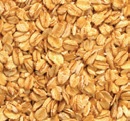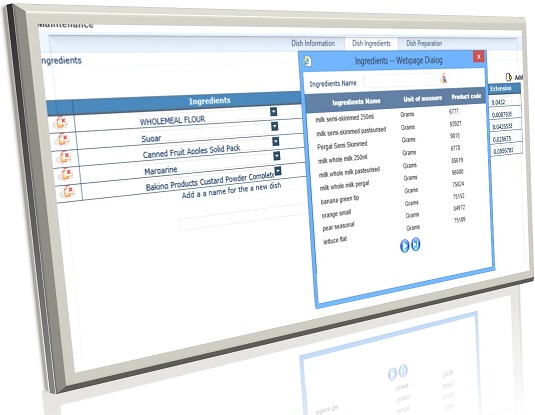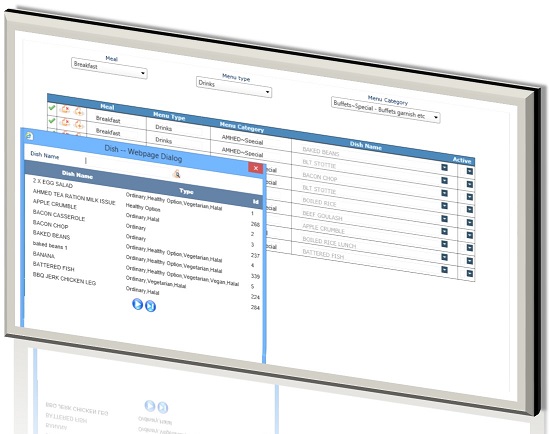Athena Allergen Manager, will take the hassle out of the new EU Food Allergen Legal requirement ( EU Food Information for Consumers Regulation (EU FIC) from December 2014 ) .
The new law requires that there is a need to provide and display Allergen information for all food that is prepared in the following way:
 |

|

|
 |
Celery | This includes celery stalks, leaves and seeds and celeriac. It is often found in celery, salt, salads, some meat products, soups and stock cubes. |
 |
Cereals containing gluten | This includes wheat (such as Spelt and Khorasan wheat, Kamut), rye, barley and oats.It is often found in foods containing flour, such as some baking powders, batter, breadcrumbs, bread, cakes, couscous, meat products, pasta, pastry, sauces, soups and foods dusted with flour. The cereal will need to be declared. However, it is up to you if you want to declare the presence of gluten with this. |
 |
Crustaceans | Allergy to crustacea is quite common. People who are sensitive can react to different types of crustacean, e.g. shrimps, prawns and lobsters. Crustacea often cause severe reactions, and some people can react to cooking vapours. Some people allergic to crustacea also react to molluscs. |
 |
Eggs | This is often found in cakes, some meat products, mayonnaise, mousses, pasta, quiche, sauces and foods brushed or glazed with egg. Egg allergy is common in young children, but more than half the children affected grow out of this allergy by age 3. Egg can cause anaphylactic reactions in some individuals. |
 |
Fish | This is often found in some fish sauces, pizzas, relishes, salad dressings, stock cubes and in Worcestershire sauce. |
 |
Lupin | This includes lupin seeds and flour, and can be found in some types of bread, pastries and pasta. |
 |
Milk | This is found in butter, cheese, cream, milk powders and yoghurt.It is often used in foods glazed with milk, powdered soups and sauces. |
 |
Molluscs | This includes mussels, land snails, squid and whelks.It is often found in oyster sauce or as an ingredient in fish stews. |
 |
Mustard | This includes liquid mustard, mustard powder and mustard seeds.It is often found in breads, curries, marinades, meat products, salad dressing, sauces and soups. |
 |
Nuts | This includes almonds, hazelnuts, walnuts, cashews, pecan nuts, Brazil nuts, pistachio nuts, macadamia or Queensland nuts.These can be found in breads, biscuits, crackers, desserts, ice cream, marzipan (almond paste), nut oils and sauces.Ground, crushed or flaked almonds are often used in Asian dishes such as curries or stir fries. |
 |
Peanuts | This can be found in biscuits, cakes, curries, desserts and sauces such as for satay.It is also found in groundnut oil and peanut flour. |
 |
Sesame seeds | This can be found in bread, breadsticks, houmous, sesame oil and tahini (sesame paste). |
 |
Soya | This can be found in beancurd, edamame beans, miso paste, textured soya protein, soya flour or tofu.It is often used in some desserts, ice cream, meat products, sauces and vegetarian products. |
 |
Sulphur dioxide | This is often used as a preservative in dried fruit, meat products, soft drinks and vegetables as well as in wine and beer. |
Details of these allergens will have to be listed clearly in an obvious place such as:
The legislation indicates that Allergen information should be available at the point of delivery. In the event that the detailed information cannot be provided on the menu, then there should be clear guidelines as to where this information is available. Information should include:
A practical approach is to provide summary information at the delivery point and make detailed information clearly accessible. The signposting to the detailed information needs to be clearly signposted.
Athena is simple and easy to use. There are 4 simple steps:
Step 1: Create a dishSimply create a dish in Athena by giving it a name, description, and you can add a photo of the dish if desirable. Later you can add further characteristics such as Food Types, Food Symbols you may want to use. |

|

|
Step 2: Add or update ingredients for the dish.
Add or update ingredients to your dish.
Ingredients can be selected, based on the following sources:
|
Step 3 Create a Menu
You can create a menu with any number of dishes, courses or meals.
|

|

|
Step 4 Select the templates you want to use
There are a number of standard templates that can be used for generating menus,
posters and Dish Detail Manuals.
|
You have all the information you need.
|

|
As you change dishes, recipes and menus; or if there are updates from your suppliers, together we will keep your system upto date.
The system is available over the web so that at any time you can update your menus and print off the information as required.